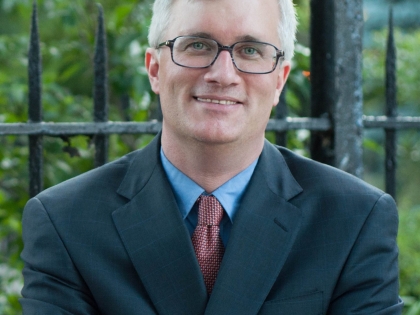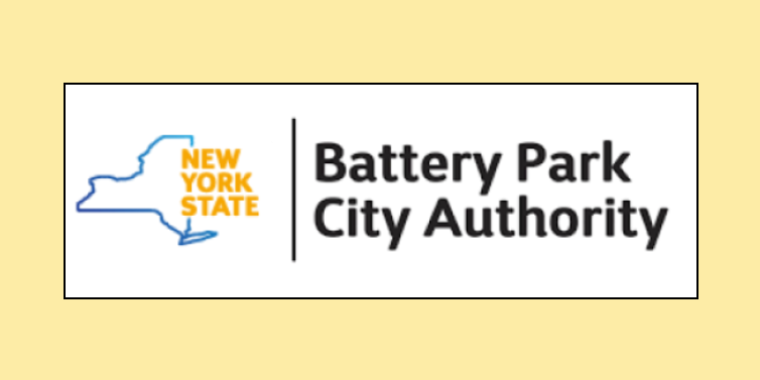
Forwarding: Mayor de Blasio Unveils Plan to Save and Reimagine the BQE
August 4, 2021

_______________
Mayor de Blasio Unveils Plan to Save and Reimagine the BQE
NEW YORK— Mayor Bill de Blasio and Department of Transportation (DOT) Commissioner Hank Gutman today released a comprehensive plan to extend the life of the Brooklyn-Queens Expressway (BQE) cantilever for at least another 20 years, while reimagining the corridor for a long-term future with less reliance on large, diesel trucks. The four-part plan focuses on preserving the structure; executing immediate and ongoing maintenance; expanding monitoring and enforcement; and developing a long-term, community-based vision for the entire corridor.
“We have the technology, the ideas, and the expertise to save the BQE, and we’re excited to execute this plan. But that’s just the start,” said Mayor Bill de Blasio. “New York City can do more than patch up a highway in need of repair – we can use this opportunity to rethink how people, goods, and services move around our city. I look forward to leading that process, and findings fresh ways to use this resource to build a long-term recovery for all of us.”
“Repairing and restoring the BQE takes creativity, ingenuity, and hard work, and I’m proud to lay out a plan that relies on just that,” said Deputy Mayor for Operations Laura Anglin. “This plan will preserve an essential part of our city’s infrastructure for years to come, and I look forward to thinking creatively about its future.”
“This plan is designed to address current safety and structural concerns about the 70-year old roadway, while reimagining not only its future purpose, but how freight is moved in this city in the 21st century,” said DOT Commissioner Hank Gutman.
“To drive economic development, we must invest in sustainable roadways, and decrease our reliance on diesel trucks to transport goods,” said New York City Economic Development Corporation President and CEO Rachel Loeb. “Tens of thousands of New Yorkers depend on the BQE, and aging infrastructure and truck congestion have been long-standing problems. NYCDOT’s plan will work to address needed maintenance and repairs to make the expressway safer and will allow for commerce to move more efficiently, helping our city’s businesses and residents. NYCEDC will continue to support the city in its long-term vision to also ease truck congestion with water and rail solutions, which will reduce traffic and harmful emissions.”
The mayor’s plan features four key elements:
Preserving the Structure
DOT has identified new ways to provide at least two more decades of life on the BQE from Sands Street to Atlantic Avenue in Brooklyn. These methods include:
Stopping water infiltration
Preservation methods will stop water infiltration to slow down corrosion. These methods will mitigate the intrusion of water into the structure by addressing the joints, improving drainage, and reintroducing waterproofing. This effort will be combined with rigorous, ongoing maintenance.
Shifting lane markings
- Starting on August 30 and as recommended by the Expert Panel convened by the City in 2019, DOT will shift lane markings on the BQE along a half-mile segment (approximately from Atlantic Ave to the Brooklyn Bridge) from three lanes in each direction to two. DOT will replace current pavement markings of three sub-standard width lanes with two wider lanes and a shoulder, which will also allow for improved entry lanes at Atlantic Avenue. This will reduce weight along a critical segment of the structure, make the roadway safer, and reduce delays caused by breakdowns and collisions.
Monitoring and managing traffic
- DOT will launch a comprehensive traffic management and monitoring plan, as well as a neighborhood protection plan to minimize disruption to motorists and nearby residents.
- The City will install “weigh-in-motion” technology to automatically fine overweight trucks, which put undue strain on the structure. The NYPD has already increased weight enforcement in recent months; summonses have increased up to five-fold since February.
- Once per month, NYPD will surge enforcement even further, with extra units increasing efforts over several days at a time.
Immediate and Ongoing Maintenance
- DOT will complete its ongoing concrete and rebar repairs on the Hicks Street retaining wall this year. Work on two deck spans showing faster signs of deterioration will begin next year.
Expanding Monitoring
- The City has installed sensors along the BQE to continuously monitor the structure’s health. Preliminary results will be available later this summer; full results should be available by next spring. These sensors will provide a real time picture of how the structure is behaving under traffic.
Developing a Long-Term Vision
- Throughout the summer and fall, the City will engage affected communities from Staten Island to Queens, including businesses and the freight industry, on a corridor-wide vision for the long-term future of the BQE.
- As discussed in Delivering New York: A Smart Truck Management Plan for New York City, the City will better manage the last leg of the freight supply chain, especially during the most congested times of day, by incentivizing off-hour deliveries, freight consolidation, and cargo bike deliveries. The plan also outlined ways the City will promote and incentivize the use of safer, cleaner vehicles and technology by expanding the NYC Clean Truck Program.
- By working with freight and distribution companies, the City can make significant shifts from truck to water or rail movement of goods (up to 20 million truck miles eliminated annually) to diminish congestion and better air quality.
"Brooklyn's only interstate highway, the BQE-278 corridor will cost billions to repair, reimagine and replace, and federal infrastructure funding will be key. But we have to get it right. Buying time now -- by making needed repairs, lessening the heavy loads and putting in place ongoing monitoring to ensure it remains safe -- is crucial as we engage communities along the corridor to find the best answers for a 21st Century solution. I want to thank the Mayor and DOT Commissioner for a path forward, and my state elected colleagues Assemblywoman Jo Anne Simon and Senator Brian Kavanagh for legislation to enforce overweight truck rules and to begin a new governance model to ensure better state, city and federal collaboration on the task of transforming the BQE. We all need to work together to shift how freight is moved. We can build on strategies for lighter more environmentally friendly vehicles and take advantage of the USDOT MARAD-designated East Coast Marine Highway to increase waterborne options and develop green ports and rail connections which will go a long way in environmental and infrastructure dividends. Government must work together at all levels to make it happen and I want to thank the City for initiating the collaboration across agencies and levels of government," said Congresswoman Nydia Velázquez.
"I applaud DOT for taking immediate steps to ensure the safety of motorists on the rapidly deteriorating BQE, in line with the Council’s recommendations. While these measures to prolong the life of the structure are necessary in the short term, it’s important that the City and State work together to produce a vision for the future that works for the many affected communities along the entire length of the highway. I look forward to evaluating the department’s proposal for a long term solution for the BQE corridor," said Council Speaker Corey Johnson.
“I applaud Commissioner Hank Gutman and his colleagues at DOT for developing this thorough, thoughtful plan and Mayor Bill de Blasio for committing to implement it,” said Senator Brian Kavanagh. “Extending the useful life of the Brooklyn-Queens Expressway, while ensuring the safety of drivers and passengers of vehicles that use the roadway, will allow time for the City, State, and federal governments to develop a long-term approach to this critical route that reflects New York’s evolving transportation needs and better serves the communities along the BQE corridor. I am pleased that the City’s plan embraces ‘weigh-in-motion’ technology, which Assemblywoman Jo Anne Simon and I passed legislation to authorize, to enforce laws against overweight trucks that are dangerous to other drivers and cause undue strain on the structure. I expect that once successfully deployed here, weigh-in-motion enforcement and other aspects of the plan announced today will serve as a model for other roadways in New York and around the country.”
“I’m pleased that we are finally committing to fixing the Brooklyn-Queens Expressway (BQE) triple cantilever while also actively planning a vastly safer, smarter, and more sustainable Brooklyn I-278 corridor for the communities through which it passes,” said Assembly Member Jo Anne Simon. "It is a relief that the worst sections of the roadway will get much-needed repairs allowing for the time necessary to envision and build the coherent approach to the corridor that I have advocated for for decades. A critical piece of prolonging the life of the roadway is taking the enforcement of overweight trucks seriously, and I am grateful that Senator Kavanagh and I have had the strong support of Mayor de Blasio and DOT Commissioner Gutman for passing the ‘weigh-in-motion’ bill in the most recent legislative session. Governor Cuomo can’t sign that bill soon enough. I am looking forward to working together with the City, State and federal governments and with local communities to plan for the entire Brooklyn I-278 corridor, including addressing tunnel alternatives along the BQE, and prioritizing climate justice concerns.”
“The DOT’s plan to reduce traffic on the BQE triple cantilever from 3 lanes to 2 lanes, while also making structural repairs and reducing truck traffic will expand the useful life of this section of the BQE. This is the prudent and safe course of action for a roadway in desperate need of repair and redesign. Further, this plan smartly allows future administrations to easily make additional improvements,” said Assembly Member Robert Carroll.
"I am proud to stand with the Mayor and Commissioner Gutman on the release of this comprehensive plan to extend the life of the BQE cantilever. It is imperative that work begin immediately to ensure that the structure is not allowed to degrade any further - to protect all New Yorkers who travel on or are in close proximity to this corridor, including adjacent communities. We must implement a forward thinking plan which combines the efforts of the experts throughout this process and which reduces reliance on large trucks and vehicular traffic, addresses maintenance needs, accommodates monitoring and sets the standard with a vision for the next one hundred years. Today's announcement brings us one step closer in that direction taking into account the input of the community, the BQE Expert Panel, NYCDOT, independent engineers and various stakeholders for the Atlantic to Sands Street segment of the BQE cantilever," said Council Member Stephen Levin.
“We know this project will not be an easy task to complete. I am happy to hear that the DOT and Mayor de Blasio are diligently working to implement a plan that will fix many of the most immediate issues affecting the BQE’s structural integrity,” said Council Member Ydanis Rodriguez, Chairman of the Transportation Committee. “Mayor de Blasio’s appointed 2019 Independent Expert Panel strongly suggested that the City immediately implement traffic reducing measures coupled with critical infrastructure repairs. This plan will help us meet many of those goals while also allowing the local community to be a part of the BQE’s long term development. I look forward to continuing to work alongside Mayor de Blasio, DOT Commissioner Hank Gutman, and our Federal legislators to ensure we have the financial resources we need to complete the repairs the BQE desperately needs.”
“Every day, the safety of Brooklyn Heights residents and commuters hangs in the balance of a mere 1.5-mile stretch of the BQE,” said Carlo A. Scissura, President and CEO of the New York Building Congress and Chair of the BQE Expert Panel. “We recognized the risks the triple cantilever posed — and the greater needs to reimagine the entire BQE — when the Expert Panel gave its recommendations. Today’s measures, based in part on those findings, is a major step in the long road to ending our dependence on yesterday’s highways, reducing traffic-related emissions and returning open space to communities. We thank and applaud Mayor de Blasio and Commissioner Gutman for taking this historic action.”
“Across the nation, the destructive effects of urban highways are being recognized and addressed. The transformation of the BQE, one of New York City’s most decrepit and polluting transportation corridors, is of critical importance to the future of our city. The Coalition for the BQE Transformation (BQET) applauds the immediate measures which DOT is taking to ensure the safety of the Triple Cantilever because this plan buys New Yorkers time to develop a truly visionary solution to what has been a political hot potato for more than twenty years. But the planning to reverse the negative environmental, economic, and public health impacts of the BQE must begin now, and we will hold the City to its commitment to move forward immediately with structured and substantive engagement with all the communities along the BQE corridor. The BQET looks forward to working closely with DOT during this interim repair process to accommodate a host of near-term pollution, environmental, safety, and connectivity improvements. Today’s announcement is an important step in the right direction,” on Behalf of the Coalition for the BQE Transformation.
"The reconstruction of the BQE is critical to the community surrounding the Montague Street and the Atlantic Avenue Business Improvement Districts. We look forward to working closely with our partners at DOT and NYPD to ensure the businesses and community are impacted as little as possible," said Kate Chura, Executive Director, Montague and Atlantic Avenue Business Improvement Districts.
"The BQE is one of the most pressing infrastructure challenges facing the city right now and DOT's plans to shore up this vital corridor is an important step," said Regina Myer, President of Downtown Brooklyn Partnership. "The project is also an important reminder that we have a unique opportunity to address past mistakes by designing infrastructure that will finally provide vital connections between the waterfront and Downtown Brooklyn for all users. We look forward to continuing to work with DOT and surrounding communities on a long-term plan for the BQE that includes creating the green gateway into Brooklyn that New Yorkers deserve."
"The BQE has far-ranging impacts for communities along the corridor from Staten Island to Queens," said Mike Racioppo, Brooklyn Community Board 6 District Manager. "It is imperative that we have a community-driven process to envision the future of the roadway, and the proposed measures in this announcement ensure there is sufficient time to conduct thorough and meaningful community engagement."
"This is the entrance to Brooklyn! The transformation of the BQE has the potential to reshape Dumbo's walkways and open up even more open space to the waterfront and up to Downtown. A key piece is minimizing local traffic and we look forward to working with the city toward this end," said Alexandria Sica, President DUMBO Improvement District.
"The BQE has long been in need of a revisioning. We are pleased that the City will reimagine the roadway and take concrete steps to extend the life of the cantilever. The plan will reduce traffic and diminish freight congestion on the roadway, which will improve air quality and fight transportation pollution. It will also promote low-emission vehicles such as clean trucks - which is one of NYLCV's top priorities. We commend Mayor de Blasio and Commissioner Gutman on their leadership and look forward to working with stakeholders as this plan is implemented,” said Julie Tighe, President of the New York League of Conservation Voters.
“We are very glad to see recommendations from RPA’s “Reimagining the BQE” report being implemented - and thank our local elected officials and public servants for taking multi-faceted action to address concerns along this critical roadway,” said Tom Wright, President and CEO, Regional Plan Association. “The important steps outlined today follow the diligent work of the mayor’s Experts’ Panel and will allow for a thoughtful long-term plan for the BQE which responds to the changing nature of work, travel, commerce and climate change.”
Share this Article or Press Release
Newsroom
Go to Newsroom


